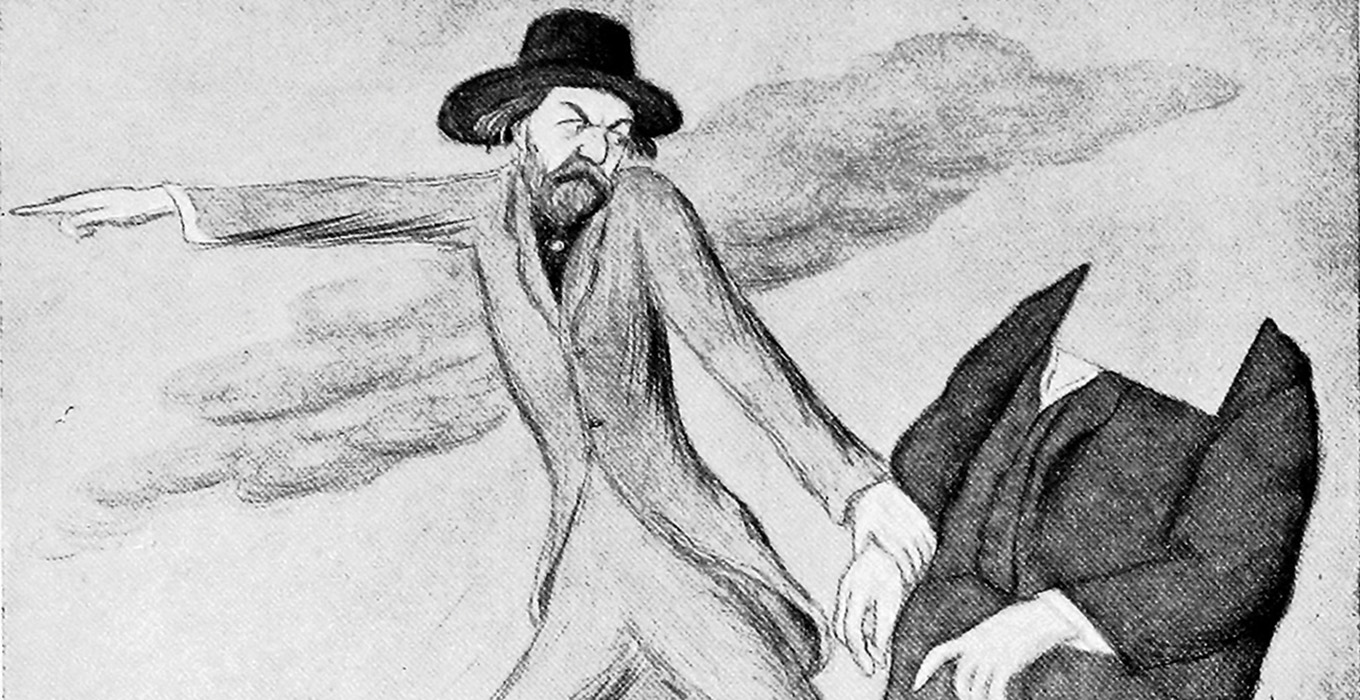More than 100 years ago, the prominent art collector and soap millionaire Lord Leverhulme (1851-1925) destroyed his own portrait. Painted in 1920 by the leading celebrity portraitist Augustus John (1878-1961), the affair hit the tabloids and caused outrage and upset. This bizarre and controversial story will be the focus of a new Augustus John exhibition at the Lady Lever Art Gallery in 2021.
At the first sitting for the portrait, Lever declared that “he was an almost impossible subject to which no artist had done justice”. Once the portrait was complete, Lever immediately questioned its likeness. In response, John offered the millionaire his brushes and palette.
Nevertheless, the painting was paid for and delivered to Lever’s bungalow at Rivington. Hurt and mortified by the portrait, he tried to hide it in his safe so it would never be seen. Unfortunately, the whole canvas would not fit and in desperation Lever cut out the head and quickly stashed it away. His housekeeper, unaware of what had happened, returned the remainder of the canvas and the packing crate to John.
John was outraged and demanded an explanation. The story was leaked to the press and the correspondence between artist and sitter was published in its entirety. The story reignited a historic debate about who really “owned” an artwork and had the final say in its use and fate – the artist who made it or the person who bought it? The issue was particularly topical because of the way Lever’s firm Sunlight Soap used original artworks for their advertisements.
The scandal did not end there. On 5 November 1920 over 500 art students protested across London. They formed a procession from Gower Street to Hyde Park, burning Lever’s effigy at the finale. They carried huge caricatures of Lever displaying the words “What’s the matter with it?” Lever was also shown pointing a giant pair of shears towards a soap box annotated “Lord Leave-a-hole. Heads cut off at shortest notice”.
This slideshow requires JavaScript.
The outrage in the artistic community extended throughout Europe. In Italy, tools were thrown down for 24 hours while the painters, canvas weavers, colour grinders, sculptors, models and dealers went on strike. They also formed a monumental procession terminating at the Piazza della Signoria in Florence. There they burned a wreath on the spot where the Italian preacher Girolamo Savonarola (1452-1498), himself responsible for the destruction of much secular art, had been hung and burned 400 years before. The wreath was later placed on the altar of St John, apparently under the impression that he was the patron saint of the artist.
The famous caricaturist Max Beerbohm (1872-1956) didn’t miss out on a chance to produce an excellent satirical illustration based on the incident. His drawing depicts John taking the headless figure of Lever by the wrist and leading him on “a long, painful, and entirely unpremeditated journey down the ages”.
Beerbohm makes reference to altercations of the past and we are once again thrown into the midst of famous artistic disputes such as The Baronet and the Butterfly. This lengthy legal dispute between Sir William Eden (1849-1915) and James McNeill Whistler (1834-1903) resulted in the removal of Mrs Eden’s head from her portrait in 1895. This highlights how we must also consider the actions of artists themselves who have destroyed their own work. John himself destroyed his portrait of the Earl of Athlone because, in his own words,
“I suddenly couldn’t bear it”.
The painter John Lavery (1856-1941) sided with John. He believed “the ownership of a work of art does not include the right to alter or to destroy without the permission of the author”. The American sculptor Jacob Epstein (1880-1959) said “a man should not reject a work of art merely on the ground that it gave an unflattering picture of himself”.
Does he have a point? Should the owner of a work of art, whether it is a painting, poem or piece of music, be allowed to alter, change or destroy it?
John was renowned for his unforgiving and often brutal portraits. Surely Lever knew the risks? The portrait obviously hurt his pride and self-image, but as a patron of the arts, were Lever’s actions reasonable? These questions have particular significance today. In an age of social media, do we take for granted our choice of self-representation and censorship?
Lady Lever Art Gallery at Port Sunlight, Wirral, will reopen in line with government restrictions. The Last Bohemian: Augustus John will show around 40 works by the artist (liverpoolmuseums.org.uk/lady-lever-art-gallery)
Like the Big Issue North on Facebook



Leave a reply
Your email address will not be published.